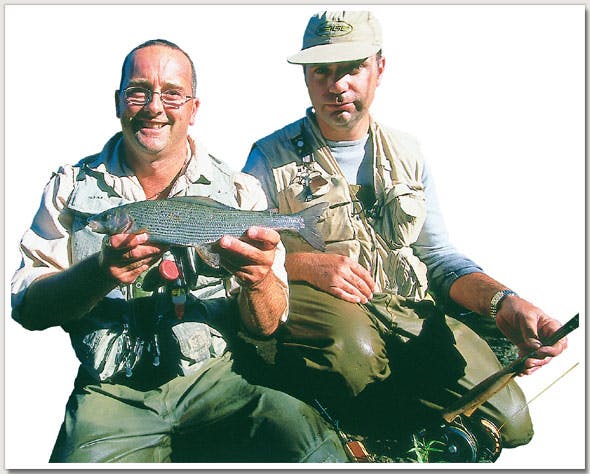FISHING, MASTERING AND CATCHING MORE TROUT FROM SMALL RIVERS
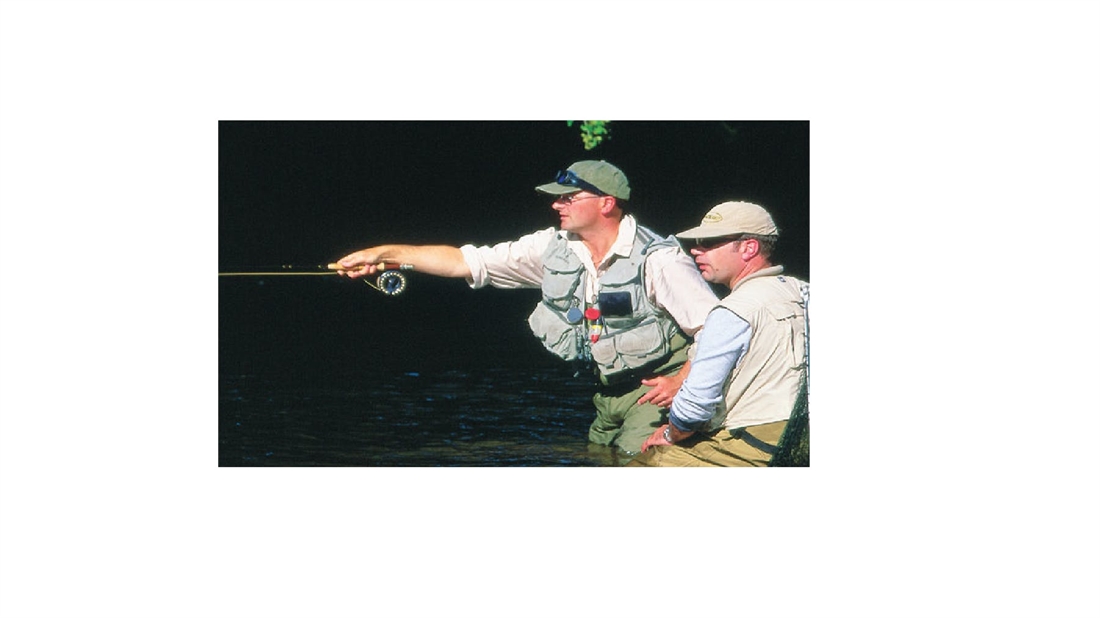
When the rivers shallow, not very wide and shrouded with trees you need to be at the top of your game to catch trout consistently. Improver and fly angler SIMON WITHEY hones his skills with Sportfish Team Englands JOHN TYZACK…
ABOUT THE ANGLERS
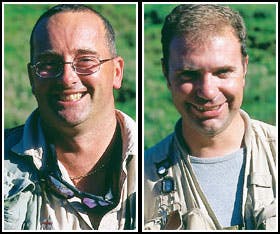
Stockport rod John Tyzack (left) cut his teeth on rivers and over 25 years has amassed an in-depth knowledge of approach and tactics. Simon Withey (right) loves the streams and is particularly fond of the Derbyshire rivers. But when the rivers are at their bare bones after long periods without rain, like most anglers, he struggles to catch fish.
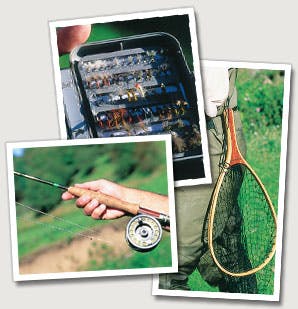
What tackle to use…
ROD, REEL & FLY LINE
Fly line: Rio Camo Green floater
Rod: Sage XP 812/ ft, four-piece, 5wt
Reel: Greys Platinum Xi
SINKANT AND FLOATANT
Orvis mud sinkant and Gink floatant
LANDING NET
A small pan-shaped landing net is all that’s needed for this sort of fishing.
LEADER
9ft Hardy tapered leader tapering down to 4lb connected to a 3ft length of 3lb Orvis Super Strong tippet
FLIES
John’s box contains a mixture of small river dries and delicate nymphs
…and why
ROD, REEL & LINE
The rod has a fast, tip action and is good for combatting wind, allowing greater control of the flies and their presentation. Being a four-piece it fits snugly into a suitcase – ideal for the travelling angler. Although 812/ ft is a good all-round length, on narrow, overgrown rivers an 8-footer or even a 712/ ft model would reduce the risk of hitting trees. The reel is light, robust and sensibly priced – you dont need a fancy reel with all the gears when fishing for small river fish. When fishing under shady trees on a bright day, a brightly-coloured fly line will spook fish. A dull green fly line is far less conspicuous.
FLIES
River fish are easily spooked by large colourful patterns so its best to choose drab flies that imitate the natural insects on the water or in the air.
LANDING NET
You dont need a huge landing net when river fishing because youre not dealing with oversized stock fish. A simple, wooden or plastic pan net will do.
LEADER AND TIPPET
A tapered leader helps turn over the fly properly and a short length of thinner tippet material makes sure that theres ample distance between the fly line and the fly itself. Tippet materials should be as thin as possible for the breaking strain, so that the fish arent easily put off. They should also be subtle, strong and not shiny.
SINKANT AND FLOATANT
Sinkant not only sinks the leader, it also removes the shine – a must on bright days as the glint from the sun can scare fish. Floatant, when applied liberally to the fly, makes sure that the treated area rides high on the surface, just like an insect blown onto the water or after emerging through the film.
The set-up
SETTING UP
Johns 9ft tapered leader with 212/ to 3ft additional tippet might seem quite long when fishing a narrow, overgrown river. But a longer leader means the flies will land on the water well away from the fly line, the very thing thats most likely to scare the fish in the first place.
So, John will no doubt get caught in the trees but hell put up with that because when he does get a cast right, his flies will be presented properly.
Join the leader and tippet together with a standard two-turn water knot. Dont forget to wet the knot before tightening.
Whether fishing dry fly or single nymph, John uses the same leader set up. And on any given day hell probably alternate between nymphs, dries and sometimes fish both together.
Dropper length is not massively important, although the longer they are the more wrap around you get. When grayling fishing, John is reasonably confident that the first flies he ties on will work, so he doesnt tend to change flies very often, hence the shortish droppers.
SELECTING A FLY
Basically, take a good look at whats hatching around you.
Whats on the water and whats in the air? On arrival at this stream it was fairly obvious that a range of flies were hatching. There were a few olives and rather more midges over the water. Always watch the river and the river will tell you what you need to know. It will tell you where the fish are, whether theyre feeding on the surface and what theyre feeding on.
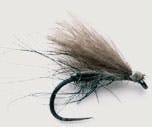
If you cant really see any flies on the water, its a safe bet to use a small general purpose fly such as an F Fly. Alternatively, a small drab nymph with or without a goldhead would be a good first choice. In shallow, clear water, brighter patterns will simply scare the fish.
Johns F Flies have a wing of three CDC feathers and he uses whatever body material is to hand. Hares ear, seals fur – anything at all which dubs onto the hook to form a neat, trim body. The original F Fly had a body of tying silk only.
Basically, match the colour of the body to the insect you see or expect to see on the water. Johns F Flies are tied on TMC103BL hooks in sizes 17 and 19.
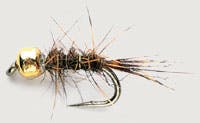
The Goldbead Hares Ear simply has hares ear for the body, a goldbead for the head, guard hairs for the tail and a gold wire rib. Both these nymphs are tied on Scorpion all purpose medium hooks, sizes 14 and 16.
John emphasises that the actual fly pattern is almost never the most important thing. Accurate presentation of the wrong fly will often bring success. Poor presentation with the right fly will usually result in failure.
SMALL KNOT FOR A SMALL FLY
When using small flies, you dont want a large knot at the hook eye, as this creates unnecessary bulk at the head and could make the fish suspicious. Heres a knot thats trustworthy but doesnt add bulk to a delicate dry or nymph.

NO FLASH
Covering the whole tippet with Orvis mud, takes the shine off the tippet. There will be no flash on that tippet at all. This is vital when fishing in bright conditions.
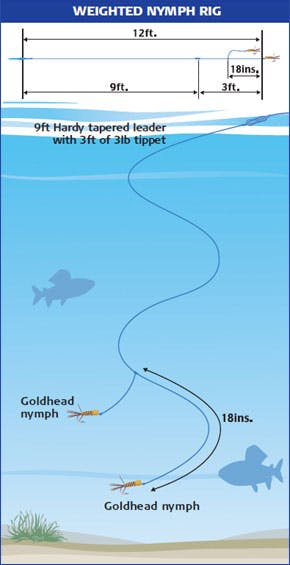
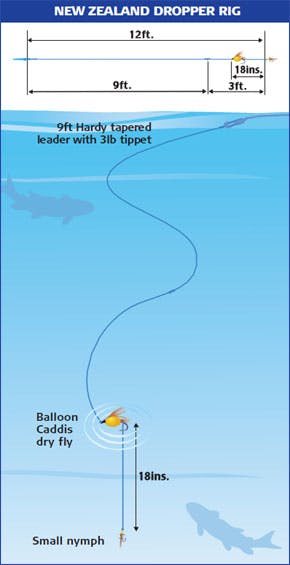
WEIGHTED NYMPH RIG
An excellent set-up for fast runs. the small, weighted nymphs are close together in the shallow water and heavy enough to sink down to the bottom where the fish will be holding station.
NEW ZEALAND DROPPER RIG
An effective tactic offering the fish a choice of two flies – a buoyant dry fly on the surface and a very small nymph near the bottom. It’s a deadly tactic and a river angler’s best kept secret. The two patterns are fishing different depths while covering plenty of water, so the chances of connecting with a fish are increased dramatically. Dropper length depends on depth of water.
How they fished

1. APPROACH
Get this wrong and you might as well not bother starting to fish. If you stand bolt upright, talk loudly or hack down bankside shrubbery, there wont be any fish left in the pool to catch or those that remain will be wary. Be careful how you approach the river, keep off the skyline and make sure your shadow doesnt fall on the water.
Walk well away from the edge of the stream (right) and quietly so that fish wont hear any sound. As fish always face upstream, make sure you approach them from behind and move slowly.
2. STOP AND WATCH
Before starting to fish, assess the water in front of you. Look for signs of rising fish. Fish may be ‘dimpling’, which are very small rises. This is a sign that fish are taking tiny midges hatching through the surface or terrestrials stuck in the film. In deeper, faster water the fish are likely to take a larger fly such as a Sedge or Klinkhamer. These deeper areas, in this case 18in to 2ft, are also likely to respond to a nymph approach.
3. BEAT THE HEADWIND
In a headwind, casting upstream is difficult. The flies can get blown back on themselves and actually land behind the leader or fly line.
Solve this by actually punching the line down towards the water on the forward cast. This helps the flies turn over.
4. THE SIDE CAST
This is the main cast for avoiding those overhanging trees. Its the same as an overhead cast but on a horizontal plane.
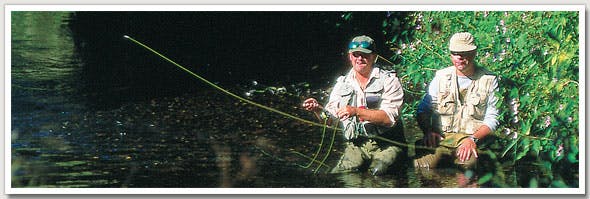
5. USE THE FLOW
When casting nymphs under low overhanging trees, crouch down and let the current take the fly line behind you. Then, use the tension of the current to load the rod for
the forward cast. This saves the leader and fly line from moving back and forth repeatedly to load the rod, which will also scare fish.
6. CLEAN OFF THE SLIME
After a fish is caught on a small dry fly, dip the fly in the river and let the current wash off the fish slime. In most cases the dry fly doesnt immediately float again because of fish slime – not because its wet. If it still won’t float, dry it thoroughly and apply floatant or dessicant before recasting.
7. SEARCH AND MOVE
Before moving upstream to get closer to rising fish at the head of the pool, cast over the area you intend to move to just in case fish are there. The water may be shallow, but fish may still be present.
8. KEEP THE NOISE DOWN
Its not just loud voices that scare fish. Careless wading will send a ripple moving upstream towards the fish (unless the current is broken and strong enough to take it away downstream). Walking fast and making splashes will create noise that will still pass through the water and to the fish. So wade very slowly and carefully.
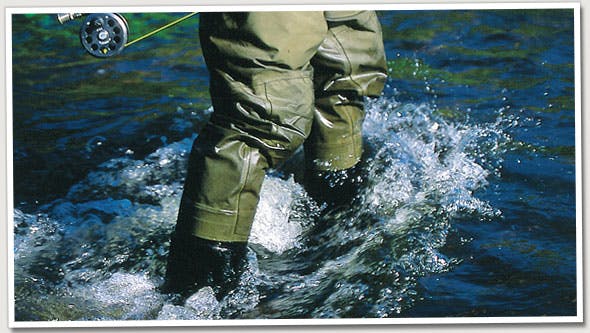
9. TRY A DIFFERENT LINE
Imagine the river is a series of parallel lines facing downstream. After youve fished a certain line
After youve fished an area through it wont produce again for a while. So lean further out letting the flow take the flies along a different line. Another tip is to lift the rod higher to raise the flies up in the water.
10. SHAKE FOR FREEDOM
Getting caught up on the bottom is an occupational hazard of fishing weighted nymphs, especially in shallow water. When the flies get snagged on rocks and stones just shake the rod to free them.
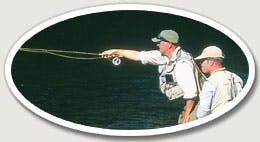
11. LOW ROD
When drifting nymphs down with the flow, hold the rod and line as low as possible. Because theres less slack, youll connect better with any takes you get. The low rod also counteracts the effect of the downstream wind and ensures that the flies fish at the correct depth.
12. REACH OUT
When fishing towards the far bank, extend your arm and body to get the fly to the far side of the run. Think of your arm as an extension of the rod.
In fast water like this, two small Tungsten beaded nymphs will get down to the fish quickly. With one fly on the point, put the other 18in up on the leader.
THE REWARD
After taking many smaller grayling, as well as a surprise dace, John changed tactics to fish a buoyant Balloon Caddis with a small Goldbead Hares Ear attached New Zealand style to the hook bend of the dry fly. It can be a deadly technique because the fish have two choices of potential food item and the dry fly and nymph cover a lot of water. The tactic earned John eight fish in only five minutes from the same pool – the best being this beautiful fish. Simon opted for the single dry fly approach and enjoyed plenty of takes.
Whats the verdict?
Says Simon: “A very interesting day and I learned a lot from John, whos obviously a top river expert. I will now be more careful in my approach and to pay close attention to detail when setting up. Often, only a slight change in your tactics, makes such a difference to your prospects.”
